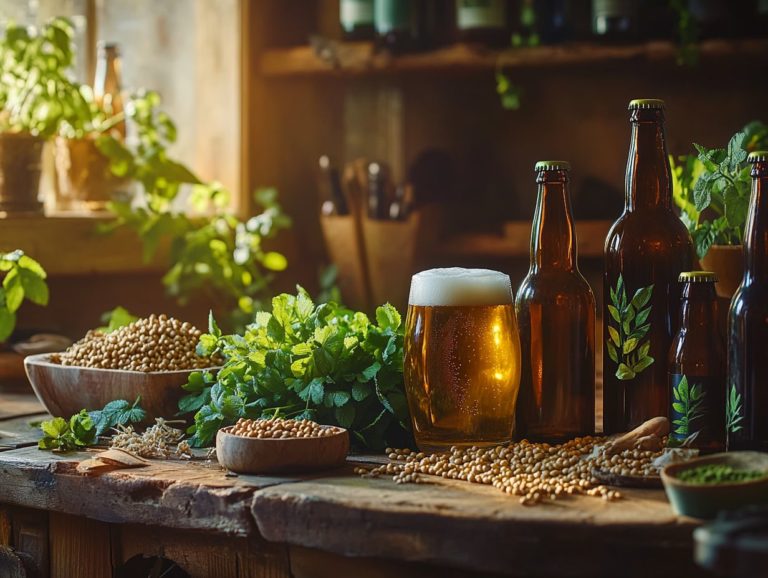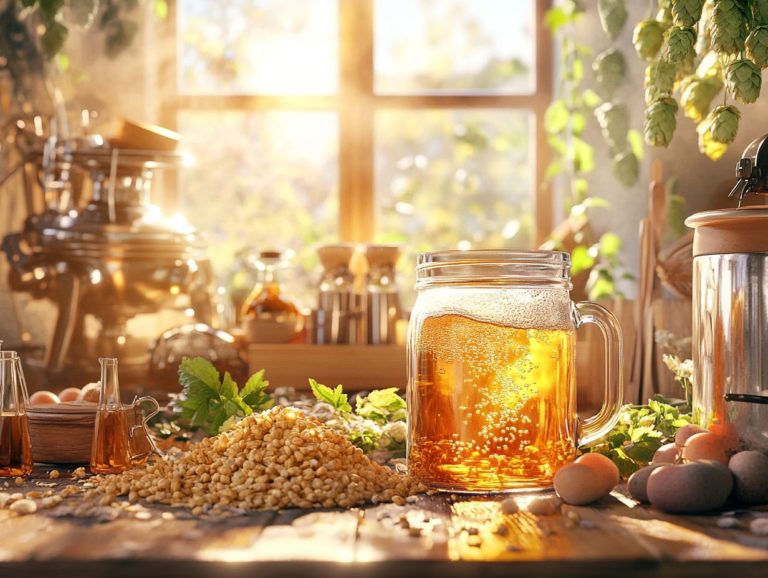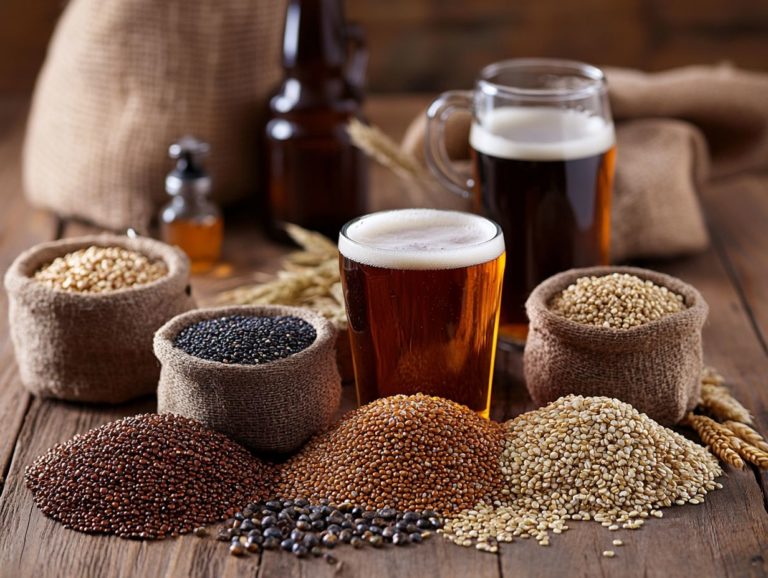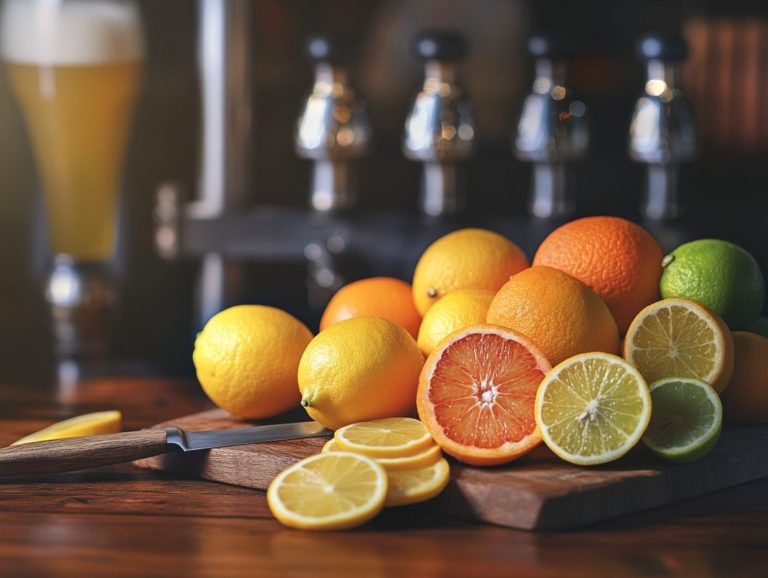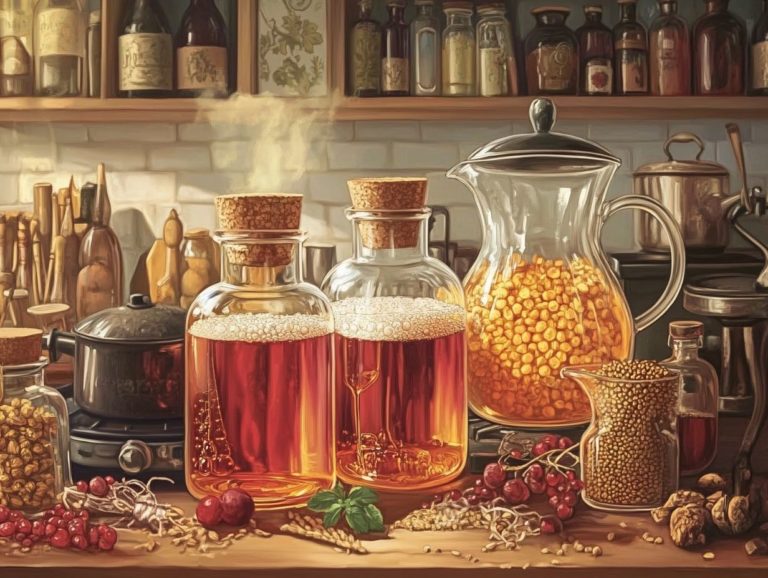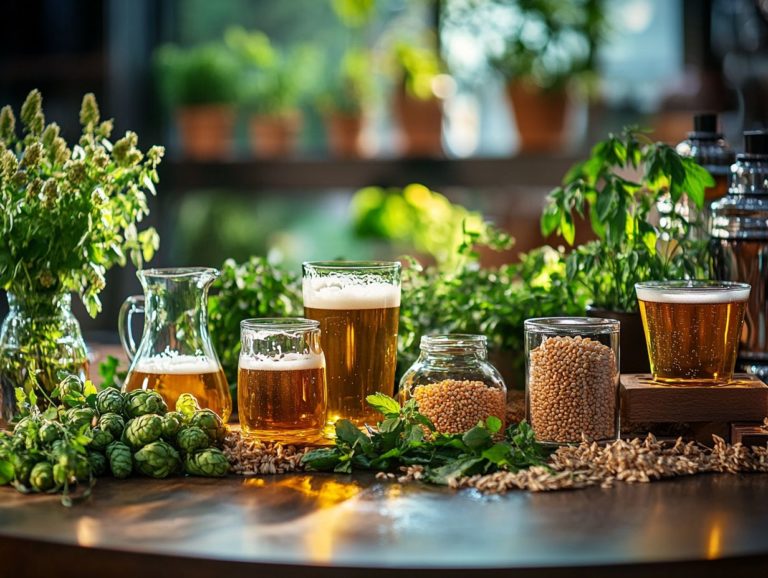5 Tips for Selecting Specialty Yeasts
When brewing beer, the choice of yeast, such as active dry yeast or fast-rising yeast, can truly transform the flavor and aroma of your creation. Specialty yeasts, including SAF instant yeast, bring unique characteristics that can elevate your brew to remarkable new heights.
This article provides essential insights for selecting the ideal specialty yeast tailored to your brewing aspirations. By knowing the type of beer you want to brew and considering factors such as temperature ranges, yeast characteristics, and shelf life, you ll be guided through the elements that can enhance your brewing experience.
Immerse yourself in the world of yeast selection, yeast experiments, and yeast management, and unlock the potential to create truly exceptional beers that reflect your personal touch.
Contents
- Key Takeaways:
- 1. Consider the Type of Beer Being Brewed
- 2. Look for Strains Specifically Designed for the Style of Beer
- 3. Read Reviews and Recommendations from Other Brewers
- 4. Consider the Temperature Range of the Yeast
- 5. Check the Shelf Life and Viability of the Yeast
- What Are Specialty Yeasts and How Are They Different from Regular Yeasts?
- Factors in Selecting Specialty Yeasts
- Common Types of Specialty Yeasts and Their Characteristics
- What Are Some Tips for Properly Storing and Handling Specialty Yeasts?
- Frequently Asked Questions
- What should I consider when selecting specialty yeasts?
- How do I determine the flavor profile of a specialty yeast?
- What fermentation characteristics should I look for in a specialty yeast?
- Is the temperature range important when selecting specialty yeasts?
- Why is Pitching Rate Important for Specialty Yeasts?
- What is the Shelf Life of Specialty Yeasts?
Key Takeaways:
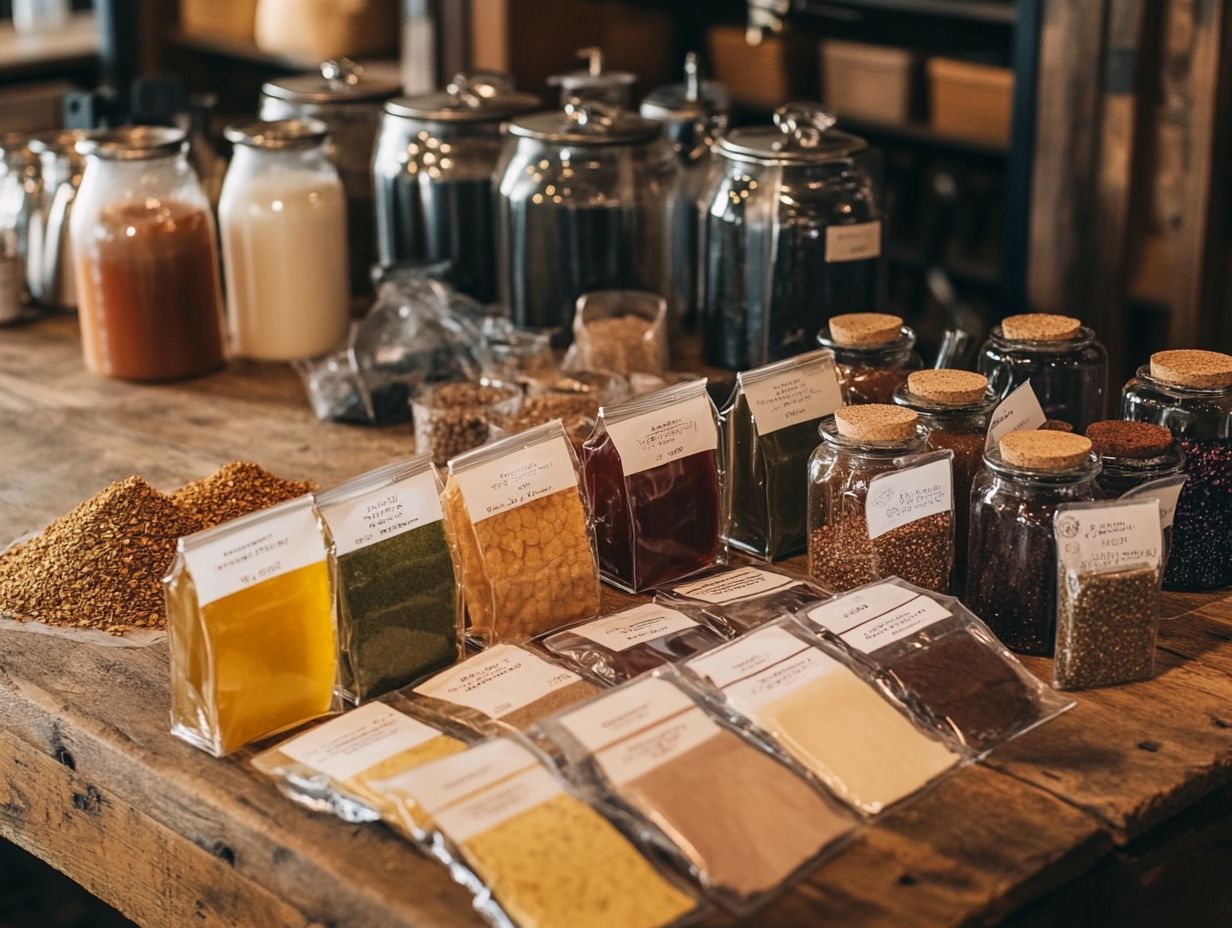
- Know your beer type for the perfect yeast match!
- Select yeast strains tailored for your brewing style!
- Tap into the wisdom of fellow brewers for insights!
1. Consider the Type of Beer Being Brewed
When you start brewing, grasping the specific type of beer you wish to create is essential. This knowledge significantly influences your yeast selection, fermentation temperatures, and the overall flavor profile of your final product.
Each beer style, whether it s an ale or a lager, calls for unique yeast strains that enhance its characteristics, contributing to the aromatic and flavor complexities that make each brew exceptional. It s vital to consider how various brewing techniques and ingredients will work in harmony with the yeast, ensuring a successful fermentation process.
For example, ales typically ferment at warmer temperatures and utilize top-fermenting yeast like Kolsch yeast, which can introduce delightful fruity esters and spicy phenols, enriching the taste. In contrast, lagers ferment at cooler temperatures, employing bottom-fermenting yeast to create a clean, crisp finish that beautifully highlights the malt and hop profiles.
Recognizing these variations not only aids you in choosing the right yeast strain but also enables you to experiment with fermentation durations and temperatures, ultimately shaping the beer s character. By thoughtfully aligning yeast strains with your desired beer attributes, you can maximize flavor potential and craft a well-rounded brew that truly delights the palate. Understanding yeast productivity and performance will enhance the quality of your brews.
2. Look for Strains Specifically Designed for the Style of Beer
Choosing yeast strains specifically engineered for particular beer styles can elevate the flavor and aroma profile of your brew, making it crucial for you to thoroughly research the options available. Yeasts like SAF Gold for Belgian ales and SAF Red for fruit-forward beers provide unique characteristics that align seamlessly with your chosen beer style, enabling optimal fermentation and flavor development. Consider yeast blend options to enhance your brews.
By grasping the key attributes of different yeast strains, you can make informed decisions that truly capture your creative vision. For example, SAF Gold shines in producing the complex fruity esters and spicy phenols typical of traditional Belgian styles, while SAF Red highlights the bright, juicy notes sought after in contemporary fruit beers. Red Star yeast is another option that offers varied profiles for different beer styles.
This intentional pairing of yeast with beer style not only influences the taste but also enhances the overall mouthfeel and aroma, underscoring the pivotal role of yeast selection in your brewing journey.
3. Read Reviews and Recommendations from Other Brewers
Consulting reviews and recommendations from fellow brewers can offer you invaluable insights into the performance of various yeast types, enabling you to make informed decisions for your brewing endeavors. Feedback from the brewing community often highlights the advantages and disadvantages of specific yeast options, their fermentation characteristics, and the impact they have on the final product.
Engaging with fellow enthusiasts not only simplifies the brewing process but also illuminates practical experiences and outcomes. Online platforms like brewing forums, social media groups, and specialized websites serve as a treasure trove of user-generated content where brewers candidly share their trials, tribulations, and triumphs. For example, experiences with yeast types like Safbrew WB-06 and their specific yeast profile can be invaluable for your brewing journey.
As you dive into these reviews, pay close attention to details such as fermentation temperature, pitch rates, and any unique adaptations suggested by the reviewers. Grasping the context of each experience, including the specific styles of beer being brewed, such as ciders or champagne, can significantly enhance your brewing techniques, leading to more consistent and enjoyable results.
4. Consider the Temperature Range of the Yeast
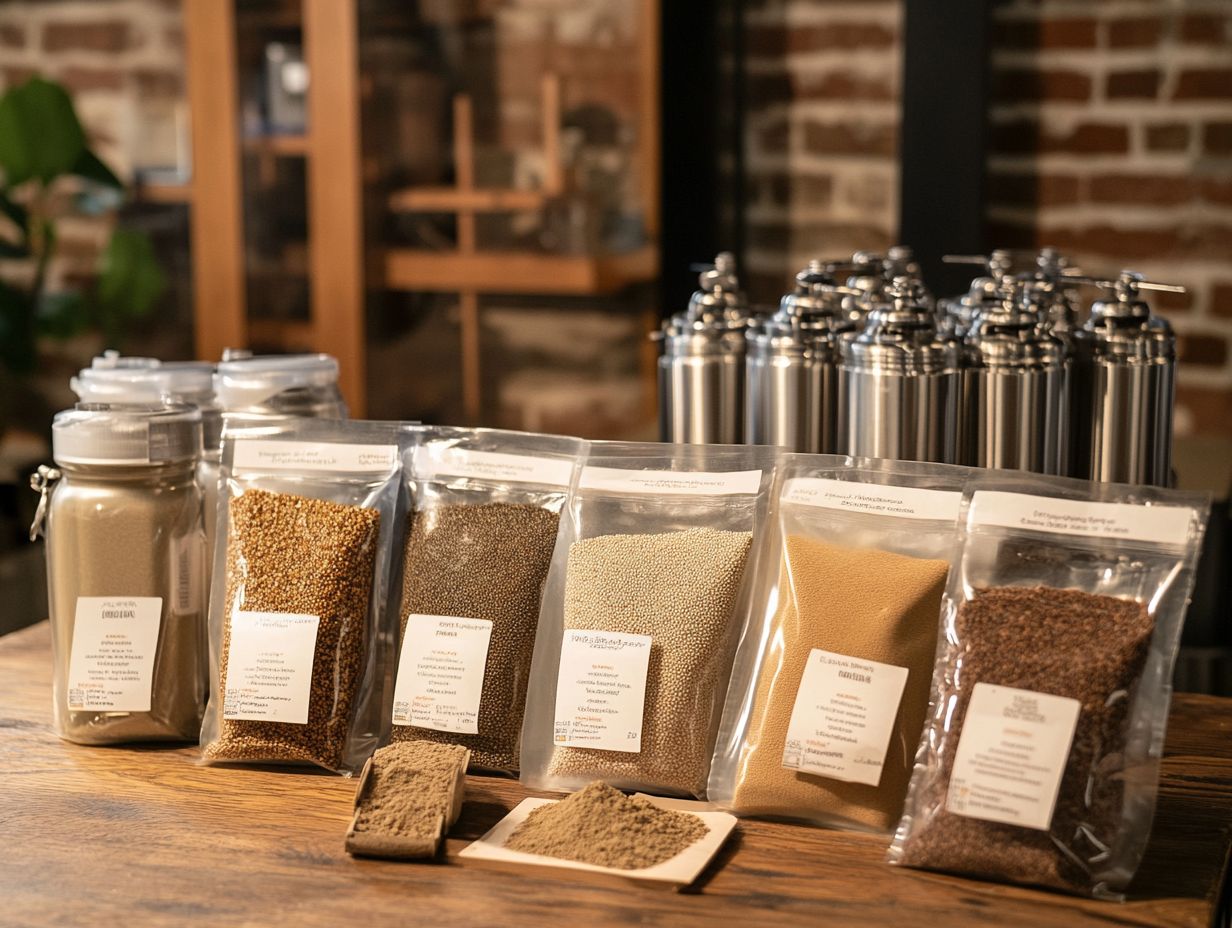
Understanding the optimal fermentation temperature range for your chosen yeast is crucial, as it directly influences yeast health, performance, and the overall success of your brewing process. Different yeast varieties thrive at different temperatures, so you must monitor and control the fermentation environment to achieve your desired flavor profile and fermentation efficiency.
A key aspect to consider is that temperature fluctuations can stress your yeast, leading to off-flavors and reduced viability. Higher temperatures can accelerate fermentation, resulting in esters (a type of flavor compound) and phenols that add complexity to your flavors, while lower temperatures generally produce a cleaner taste. Effective yeast management practices are essential to prevent such issues.
Invest in reliable temperature control systems like fermentation jackets or temperature-controlled fermentation vessels to maintain stability throughout the process. Keep a close eye on temperature readings during fermentation, making adjustments as needed to promote yeast health and ensure you end up with a quality final product. This is critical for achieving the best possible flavor in your brew!
5. Check the Shelf Life and Viability of the Yeast
Checking the shelf life and viability of yeast before brewing is an essential step that can profoundly influence both the fermentation process and the final product of your beer. By understanding how storage conditions impact yeast characteristics and ensuring that you utilize a viable yeast packet, you can prevent fermentation failures and guarantee that the yeast performs at its best during the brewing process.
Checking the shelf life and viability of yeast before brewing is an essential step that can profoundly influence both the fermentation process and the final product of your beer. By understanding how storage conditions impact yeast characteristics and ensuring that you utilize a viable yeast packet, you can prevent fermentation failures and guarantee that the yeast performs at its best during the brewing process. Proper yeast storage is crucial for maintaining yeast cultures over time.
To accurately assess yeast viability, you might consider performing a straightforward test using a microscope or a viability-staining solution, which can provide insight into the health of the yeast cells. Additionally, paying attention to the expiration dates printed on yeast packets is crucial; this helps you avoid using dormant or dead cells that won t effectively ferment sugars. Yeast testing can provide additional reassurance before starting the brewing process.
Storing yeast properly in a cool, dry place or even refrigeration can extend its life, keeping it primed for action. By adopting these meticulous practices, you can elevate your brewing experience and achieve consistently exceptional beers.
What Are Specialty Yeasts and How Are They Different from Regular Yeasts?
Specialty yeasts are unique strains cultivated specifically to impart distinct flavors and aromas in brewing, setting them apart from the regular yeasts typically used for fermentation. These specialty yeasts offer unique fermentation profiles, enhancing the complexity of various beer styles, and are vital for you if you re looking to experiment with unconventional flavors or elevate traditional brewing recipes. They are essential in crafting beers with unique yeast aroma and yeast flavor profiles.
For example, consider the Belgian yeast strains, which are famed for their ability to produce fruity and spicy notes. They re perfect for crafting authentic Belgian ales. Likewise, yeast strains from specific regions can contribute a local character, reflecting the terroir in your final product.
Incorporating these specialty yeasts into your brewing process is a matter of employing techniques like temperature control and strategic fermentation timing. This approach allows you to harness the unique traits of each strain. By leveraging these distinctive offerings, you can differentiate your beers, creating signature styles that truly resonate with craft beer enthusiasts. Yeast experimentations with different brewing yeast can lead to remarkable new brews.
Factors in Selecting Specialty Yeasts
What Factors Should Be Considered When Selecting Specialty Yeasts?
When you re selecting specialty yeasts, there are several key factors to keep in mind to ensure optimal fermentation and flavor development. Consider attenuation, flocculation, and alcohol tolerance.
Each of these traits can significantly affect the brewing process and ultimately shape the profile of your beer. The yeast selection process should also factor in yeast performance and yeast health for the best results.
Attenuation, for instance, is the yeast’s ability to convert fermentable sugars into alcohol and carbon dioxide, playing a crucial role in determining the final gravity of your brew. If you choose a yeast strain with high attenuation, you ll end up with a drier beer. Conversely, a strain with low attenuation may leave you with a sweeter finish, which could be exactly what you’re after. Yeast productivity and viability are critical factors to consider.
Flocculation refers to how yeast clumps together and settles out of the beer post-fermentation, directly influencing the clarity and mouthfeel of your creation. A yeast with higher flocculation can lead to a clearer beer with fewer yeast esters, while one with lower flocculation may impart more complex flavors and aromas, enriching the sensory experience. Testing yeast can help you find the best strain for your needs.
By understanding these characteristics, you can select the right yeast, whether it be active dry yeast or fast-rising yeast, to achieve a well-balanced beer that aligns with your brewing vision.
How Can Specialty Yeasts Enhance the Flavor and Aroma of Beer?
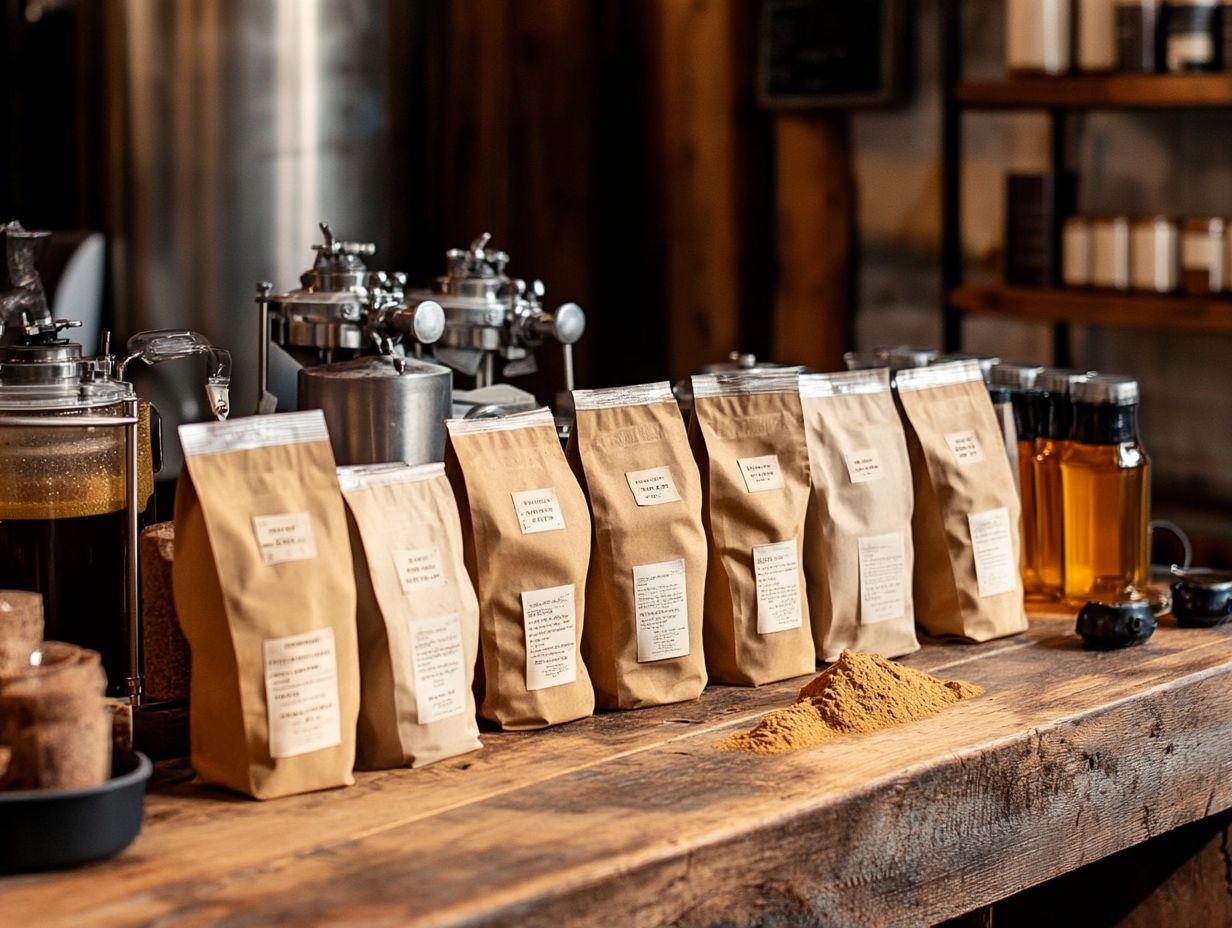
Specialty yeasts possess the extraordinary ability to elevate the flavor and aroma of your beer, creating nuanced profiles that truly enhance your drinking experience. By carefully selecting specific yeast strains tailored to particular beer styles, whether it be SAF instant yeast or traditional brewing yeast, you can unlock unique flavor compounds and aromatic characteristics that beautifully complement the ingredients in your brewing process.
Take Belgian yeast strains, for example; they re renowned for imparting fruity esters and spicy phenols, making them perfect for styles like Tripels and Saisons. On the other hand, English ale yeasts tend to contribute rich, malty aromas and a smoother mouthfeel, which are just right for traditional Bitters.
This thoughtful approach not only enhances the complexity of your beer but also opens the door to yeast experimentation, enabling you to redefine styles and push the boundaries of flavor.
Common Types of Specialty Yeasts and Their Characteristics
What Are Some Common Types of Specialty Yeasts and Their Characteristics?
You ll find a wide array of specialty yeasts at your disposal, each boasting unique characteristics that can dramatically shape the flavor, aroma, and overall essence of your beer. For instance, Belgian yeast brings forth delightful fruity and spicy notes, while lager yeast is celebrated for its crisp, clean finish. Grasping the nuances of these varieties is essential for any brewer looking to craft specific styles.
Consider English ale yeast, which offers a rich, malt-forward character, often revealing hints of caramel and toffee. Then there are the wild yeasts, like Brettanomyces, which add a touch of funkiness and complexity, making them a favorite for sour ales. Yeast types like Kolsch yeast and Safbrew WB-06 also offer distinct characteristics suited for specific beer styles.
When selecting the ideal yeast for your brew, think beyond just the flavor profile. Pay attention to fermentation temperature and attenuation rates, as these elements can significantly influence your final product. Embrace the art of experimentation with different strains, including Red Star and Sierra Nevada Brewing yeasts; you may uncover surprising and delightful results that allow you to customize your creations to suit distinct tastes and preferences.
How Can Brewers Experiment with Different Specialty Yeasts?
You can embark on an exciting journey of yeast experimentation by incorporating various specialty yeasts into your brewing process. This unlocking of diverse flavors and aromas in your finished products is just the beginning. By manipulating fermentation times, temperature controls, and ingredient combinations including seasonal fruits and aromatic spices you can uncover how different yeasts interact with various components of your recipes.
This exploration might involve fine-tuning elements such as oxygen exposure and pH levels. These factors can significantly influence how fermentation works. Experimenting with unique ingredient pairings think seasonal fruits, aromatic spices, or even a variety of sugars adds remarkable depth to your brewing experience. Yeast profile and yeast health are critical factors to consider during this process.
Embrace creativity; each batch is essentially a canvas for your innovation. Be sure to keep a brewing log it’s your ticket to mastering the art of brewing! Documenting your findings will allow you to track what works and what doesn t, ultimately leading to the refinement of your techniques and the enhancement of future batches.
As you weave improvisation into your brewing routine, the possibilities for crafting unique and flavorful beers expand exponentially.
What Are Some Tips for Properly Storing and Handling Specialty Yeasts?
Properly storing and handling specialty yeasts is essential for maintaining their health and viability, ensuring optimal performance during fermentation. Storage conditions including temperature, humidity, and light exposure significantly impact yeast activity. It is crucial for you, as a brewer, to adhere to best practices that preserve these invaluable fermentation cultures.
To achieve this, store your specialty yeasts in a cool, dark place, ideally between 32 F and 50 F (0 C to 10 C), to prevent any premature activity. Refrigeration can extend their shelf life, while using airtight containers minimizes moisture exposure and helps inhibit contamination. For instance, SAF Red and SAF Gold yeasts should be stored properly to maintain their effectiveness.
When handling yeast during brewing, treat it with care. Avoid excessive agitation to prevent damaging the cells. Following proper rehydration techniques is key. This ensures the yeast is well-prepared for fermentation, maximizing its effectiveness and longevity in your brewing endeavors. Yeast management and the yeast selection process are crucial for successful brewing.
Frequently Asked Questions
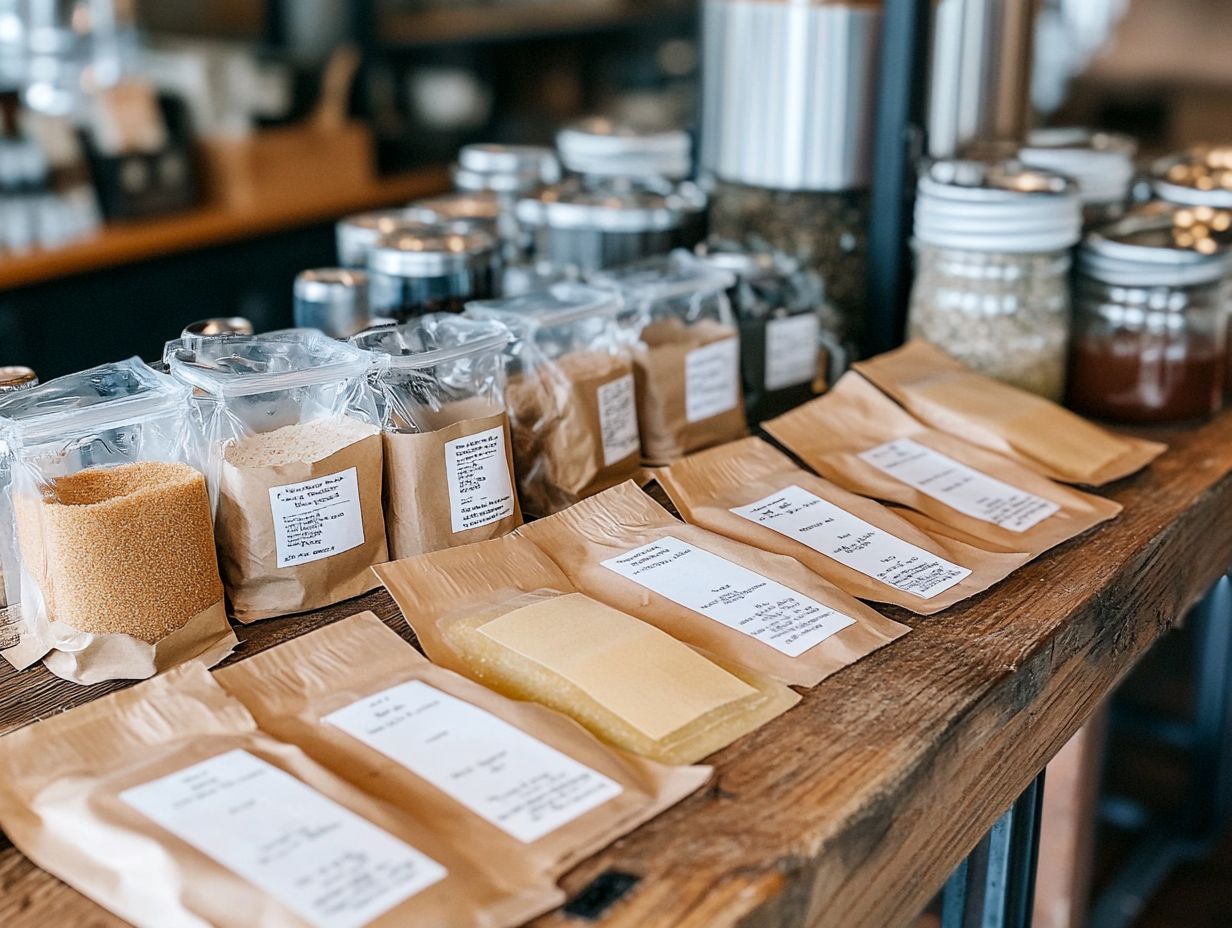
What should I consider when selecting specialty yeasts?
When selecting specialty yeasts, there are five key tips to keep in mind: flavor profile, fermentation characteristics, temperature range, pitching rate, and shelf life. Consider yeast varieties and how they impact ciders, ales, and lagers.
How do I determine the flavor profile of a specialty yeast?
The flavor profile of a specialty yeast can be determined by reading the product description or consulting with the manufacturer. It’s also helpful to ask for recommendations from other brewers who have used the yeast before. Yeast testing can also provide insights into the expected outcomes of your brew.
What fermentation characteristics should I look for in a specialty yeast?
Different specialty yeasts have varying fermentation characteristics, such as high alcohol tolerance, low flocculation, or production of unique flavors. Consider what qualities are important for your specific recipe or style of beer. The yeast selection process should factor in the desired yeast flavor and aroma.
Is the temperature range important when selecting specialty yeasts?
Yes, the temperature range is crucial when selecting specialty yeasts as it can greatly impact the final flavor of your beer. Choosing the right yeast for your brewing environment can make or break your brew, so don’t take it lightly! Make sure to choose a yeast that can survive and thrive within the temperature range of your brewing environment. Temperature control during the fermentation process is essential for optimal yeast performance.
Why is Pitching Rate Important for Specialty Yeasts?
Pitching rate is the amount of yeast you add to the mixture of water and malt. It plays a crucial role in the fermentation process and greatly influences the flavor of your beer.
Follow the recommended pitching rates specific to your yeast strain to achieve the best results. Always refer to the yeast packet instructions for precise guidance.
What is the Shelf Life of Specialty Yeasts?
The shelf life of specialty yeasts can vary. Always check the expiration date before purchasing to ensure freshness.
Most yeast packets have a shelf life of 6 months to a year. However, it’s best to use them promptly for optimal results. Proper management of your yeast cultures can help maintain their viability.

